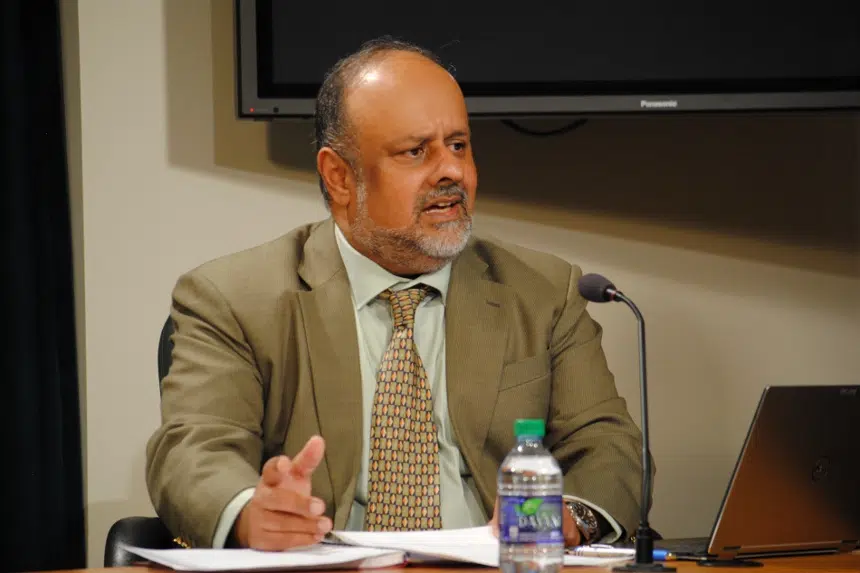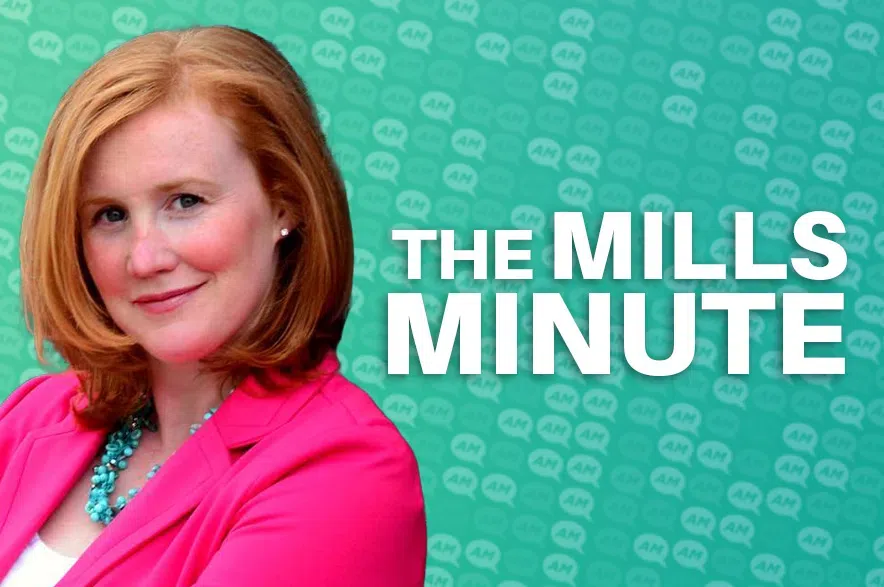After a one-day delay caused by a power failure in Regina, the Saskatchewan government revealed its COVID-19 vaccine delivery plan Wednesday — and it vowed to administer the vaccine without delay.
The government said vaccines for about 1,950 people are expected to arrive by next Tuesday as part of a pilot project being conducted in different locations across the country.
Those vaccinations — done at the Regina General Hospital — will be given to health-care workers who are providing direct care to COVID-19 patients.
Dr. Tanya Diener, medical health officer for immunizations with the Saskatchewan Health Authority (SHA), said the purpose of the pilot is to work out the logistics of the receipt, storage and handling of the vaccines.
“This is, in my opinion, the most complex immunization plan ever conducted in Canada. And (that) mostly has to do with the fact that we’re dealing with a vaccine that’s so different from any other vaccines that we’ve dealt with at this point in time,” Diener said during a media conference.
The Pfizer vaccine in particular has specific requirements, like needing to be kept at an ultra-low temperature. Diener said health officials need to figure out issues like how long the doses will be viable, how many times they can open the freezer, and how often the dry ice needs to be replaced.
“We want to make sure that we do everything 100 per cent because we do not want to waste one dose,” said Diener.
After the pilot, the first phase is expected to start later in December and continue through the first quarter of 2021.
The first phase is to focus on what the government called “priority populations” — groups that are at a higher risk of exposure or of serious illness. That includes health-care workers, elderly residents in care homes, seniors over 80 and residents in remote and northern communities.
Dr. Theresa Tam, Canada’s chief medical health officer, said Tuesday the first Pfizer shots will be given at the sites where the vaccine is delivered. That means long-term care residents may have difficulty getting vaccinated in the first wave.
The province’s chief medical health officer, Dr. Saqib Shahab, and SHA CEO Scott Livingstone both agreed that transportation of the Pfizer vaccine could be difficult, but said they anticipated the vaccine would be delivered in long-term and personal care homes.
They also pointed to the Moderna vaccine, which doesn’t need to be kept as cold and is therefore more transportable.
The provincial government said the first phase is expected to have a total of 202,052 doses expected in the province within the first three months of 2021, enough to vaccinate about 101,026 people. That includes expected weekly allocations of 10,725 doses of the Pfizer vaccine, which received Health Canada approval Wednesday.
The expectation for the first stage is that nearly 31,000 staff and residents of long-term and personal care homes would be vaccinated. Between 10,000 and 15,000 health-care workers would get doses, as would more than 51,000 residents who are 80 and older, more than 32,000 individuals between the ages of 75 and 79, and more than 47,000 people aged 70 to 74.
Nearly 9,000 residents over the age of 50 who live in remote and northern Saskatchewan also would get vaccinated.
As for how the SHA will decide who among those populations will get the vaccine first, Deiner said the most vulnerable among long-term care will be at the top of the list as much as possible. For health-care workers, it’ll be those who are most likely to come into contact with the virus.
As the eligibility moves to age groups and the wider population, Deiner said it will likely move to a first-come, first-served basis.
Acquisition of the Moderna vaccine is still being finalized. As a result, the government said allocations “are subject to fluctuate and may affect sequencing plans.”
The second phase is slated to begin in April and will continue vaccinations of members of the priority vulnerable population as well as immunizations of the general population. However, Livingstone said timelines could change if more doses are received or more vaccines are approved for use.
The government said distribution in that phase is to occur at public health clinics and other vaccination delivery sites across the province.
Some Indigenous leaders have called for Indigenous peoples to be a priority in vaccinations, pointing to government medical responsibilities under the treaties.
Shahab said Indigenous populations are a high priority, and said northern populations are a priority with lower age ranges for inclusion in the first phase. Shahab said as vaccine supplies allow, other Indigenous communities will be vaccinated across the province.
The Public Health Agency of Canada has supplied Saskatchewan with seven regular freezers and one ultra-low-temperature freezer to store the vaccines. The provincial Ministry of Health also is awaiting the delivery of 25 portable ultra-low-temperature freezers to help move the vaccine around the province.
As well, more regular freezers will be bought to store Moderna’s vaccine in public health offices throughout the province.
During the media conference, Premier Scott Moe said residents of the province need to get the vaccination to protect themselves and others in the province.
“It is the Saskatchewan way and it’s how we will protect those that are around us and it’s how we will ultimately get our life back to normal,” said Moe, who said the vaccination plan represented “a turning point in our response to the COVID-19 virus.”
Livingstone said the vaccine is only one step along the path to returning to some sense of normalcy.
“Today is certainly one of the most positive days we’ve had with our journey with the COVID pandemic and the announcement of the vaccination program and getting it out across this province as quickly as we can is a really good piece of news,” he said. “But it doesn’t stop us from doing all those things we’ve already been doing and doubling down on how we support the health-care system.”
The government said it’s continuing to finalize plans for the safe storage of vaccines, sequenced distribution across the province, public communication of the vaccines’ availability and contingency planning.
Shahab said despite the vaccination plan, residents should keep following current measures to help curb the spread of the virus.
“The vaccine is really good news,” he said. “We can’t underestimate how good of news it is and what a remarkable achievement it is for us to have a vaccine 10 months into a pandemic. But it will take time, starting with those at highest risk …
“We need to stay the course with our public health measures throughout the first and second quarter of 2021. It’s hard, it’s tiring (and) we’re all tired of that, but we absolutely have to stay the course.”
More about the government’s plan can be seen below.











